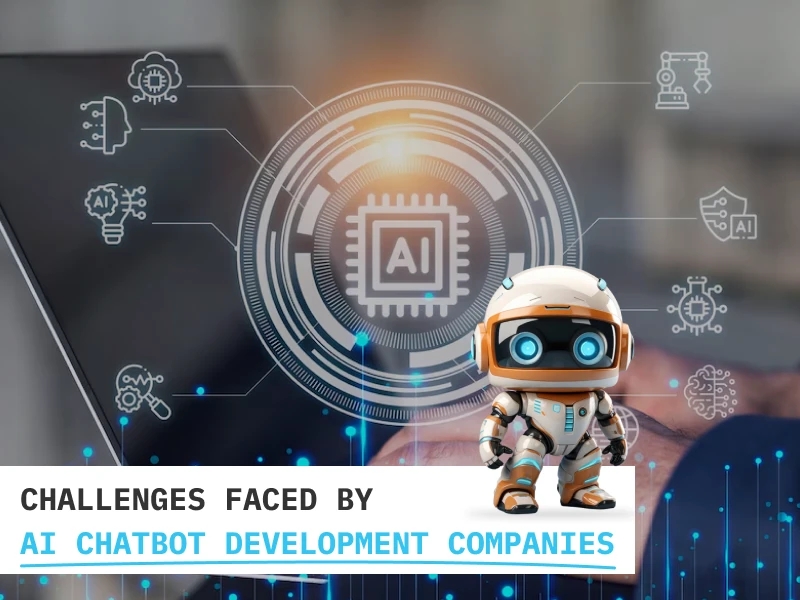
Summary
Artificial Intelligence (AI) chatbots are revolutionizing the way universities connect with students, enhancing interaction and engagement in higher education settings. The conversational proficiency of AI Chatbot Development Services is pivotal to their success. This piece delves into the transformative potential of AI chatbots in university student interaction, covering their development, functions, deployment strategies, uses, advantages, and notable case studies.
How Universities Can Use AI Chatbots to Connect with Students and Drive Success?
As universities implement AI Chatbot Development, student communication and support services undergo significant streamlining. These virtual assistants promptly address inquiries regarding admissions, courses, campus facilities, and academic resources, thereby enhancing student satisfaction. Through AI chatbots, universities improve accessibility, efficiency, and engagement in student interactions, ultimately fostering higher academic success and retention rates.
The Role of AI Chatbots in Modern Education
AI chatbots play a significant role in modern education. Here are some key roles that AI chatbots fulfill in education:
- AI chatbots offer round-the-clock assistance to students, enhancing accessibility and providing instant help whenever needed.
- By analyzing student data, chatbots deliver tailored learning experiences, optimizing engagement and learning outcomes.
- Chatbots streamline grading and feedback procedures, guaranteeing prompt assessment and tailored guidance for students. They play a supportive role in student learning within higher education.
- Utilizing machine learning, chatbots adjust learning materials based on individual student needs, pacing, and strengths.
- Chatbots streamline administrative tasks for educational institutions, handling inquiries, scheduling, and course management.
Implementing AI Chatbots in Universities
Implementing AI chatbots in universities can be a valuable addition to the institution’s technological infrastructure. Here’s a comprehensive guide on how to go about it:
1. Identify Objectives: Determine the specific objectives you want the AI chatbot to achieve. This could include improving student engagement, providing quick access to information, offering support services, etc.
2. Choose the Right Platform: Selecting the right AI framework for your chatbot is crucial. You have several options, such as custom development using programming languages like Python and libraries like TensorFlow, or utilizing chatbot development platforms like Dialogflow, Microsoft Bot Framework, or IBM Watson.
3. Data Collection and Analysis: Gather data on frequently asked questions, common student queries, and other relevant information. Analyze this data to identify patterns and determine the types of queries the chatbot should be able to handle.
4. Integration with Existing Systems: Integrate the chatbot with existing university systems, such as the student information system (SIS), learning management system (LMS), and other databases or APIs to access relevant information.
5. Testing and Iteration: Test the chatbot thoroughly to ensure that it functions correctly and provides accurate responses. Conduct user testing with students and staff to gather feedback and make improvements iteratively.
6. Promotion and Adoption: Promote the chatbot to students, faculty, and staff through various channels, such as university websites, social media, orientation sessions, and email newsletters. Encourage adoption by highlighting its usefulness and benefits.
7. Feedback and Improvement: Solicit feedback from users on their experiences with the chatbot and use this feedback to make further improvements and enhancements.
Applications of AI Chatbots in Universities
AI chatbots have diverse applications across various areas of university operations, including:
- Admissions and Enrollment: Prospective students are guided through the application processes, informed about program requirements, and reminded of admission deadlines to ensure a smooth enrollment experience.
- Academic Support: Students receive comprehensive assistance with course-related inquiries, access to study materials and resources, and personalized academic advising services to support their learning journey.
- Campus Services: Navigation support is provided to students to help them find their way around campus, facilitate bookings for campus facilities, manage event scheduling, and access various student support services conveniently.
- Student Engagement: Students are actively engaged through communication channels with student organizations, promotion of campus events, and participation in surveys and polls to gather valuable feedback and foster a vibrant campus community.
- Career Services: Students are supported in their career development journey with guidance on effective job search strategies, assistance in crafting resumes, preparation for interviews, and opportunities for networking to enhance their professional prospects.
Read More: The Future of AI Chatbot Development Services in Customer Engagement
Conclusion
In the modern digital landscape, AI Chatbot Development Services stand out as essential resources for universities striving to elevate student interaction and engagement. Leveraging cutting-edge technologies, universities can now offer personalized support, optimize communication processes, and drive student success initiatives with unprecedented efficiency. As AI continues to advance, chatbots are poised to assume an increasingly pivotal role in shaping the future of higher education, fostering a more connected and empowered learning community.
Source: Creole Studios




